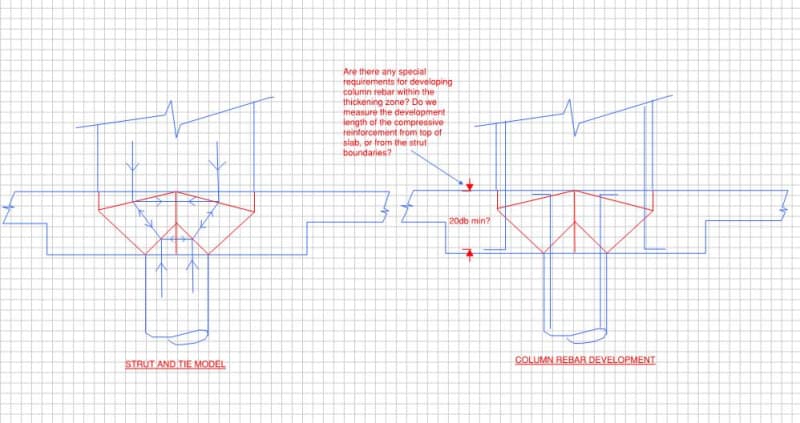Drapes
Structural
- Oct 27, 2012
- 97
If a circular column is required to transfer into a blade column (or vice versa), and the overlapping area is not large enough to transfer the axial loads by directly lapping the reinforcement over the shared cross-section, is it acceptable to provide a thickening at the column interface (via a capital or drop panel) with enough depth that would allow you to simply develop the bars in compression (approx embed depth 20 x dia rebar), in lieu of providing a full compression lap length (approx 40 x dia rebar)? This would involve terminating and cogging the reo from each column within the thickening zone.
I understand that development length is generally half the lap length for compressive reo, at least according to AS3600, so I have some reservations with the above, but would like to hear what others think.
If this method is acceptable, I believe it would allow you to utilise a higher percentage of reinforcement over the column interface, as opposed to being limited to the shared cross-section.
I have assumed the circular column and blade column are concentric to one another.
I understand that development length is generally half the lap length for compressive reo, at least according to AS3600, so I have some reservations with the above, but would like to hear what others think.
If this method is acceptable, I believe it would allow you to utilise a higher percentage of reinforcement over the column interface, as opposed to being limited to the shared cross-section.
I have assumed the circular column and blade column are concentric to one another.

